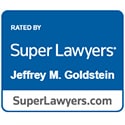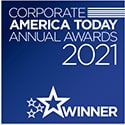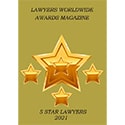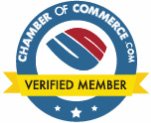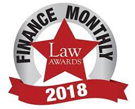Franchise Termination Damages – the Predictably Unpredictable Legal Morass
By: Jeffrey M. Goldstein, Esq.
(202) 293-3947
Goldstein Law Firm, PLLC
In franchise and antitrust distribution law there is no more exasperating, elusive and esoteric issue than damages. This analytical muddle threatens franchisors and franchisees alike. Further, the doctrinal failure regarding franchise damages is so robust that it has extensively infected damages theory, methodology, and calculation.
Georgia Court of Appeals Overturns Franchisee’s Jury Damages Award
A recent case from the Court of Appeals of Georgia, Legacy Academy, Inc., et al. v. Doles-Smith Enterprises, Inc., et al., Court of Appeals of Georgia, ¶15, 781, (Jun. 9, 2016), draws attention to a few of the more ruffling damages issues in a distribution context. In Legacy, the franchisor was Legacy Academy, Inc., (“Legacy” or “the franchisor”) owned by Melissa and Franklin Turner (collectively, the “Legacy Parties”), and the franchisee was originally GMI Smith, LLC, and later Doles–Smith Enterprises, Inc., both of which were owned by Michele Doles–Smith and Gary Smith (collectively, the “DSE Parties” or “the franchisee”).
In their complaint, the DSE Parties alleged that various representations in the franchisor’s Offering Circular about Legacy’s litigation history and the projected cash flow of its franchises were materially false and misleading and violated the Federal Trade Commission’s “Disclosure Requirements and Prohibitions Concerning Franchising and Business Opportunity Ventures Rule.” The Legacy Parties answered, denying liability, and asserted counterclaims for lost royalties and advertising fees, which, absent the ‘early closing’ of the franchise associated with the termination, would arguably have been paid by the franchisee over the full term of the franchise agreement.
Following a trial, the jury found in favor of the DSE Parties on their claims for negligent misrepresentation (awarding $350,000 in damages) and negligence for violation of the FTC Rule (awarding $40,000 in damages). The jury also found in favor of Legacy on its breach-of-contract counterclaim for lost royalties and lost advertising fees (awarding $46,300 in damages). The trial court entered final judgment on the jury’s verdicts, resulting in appeals by both the franchisor and franchisee in which the parties challenged the trial court’s denial of their respective motions for directed verdict and judgment notwithstanding the verdict. These motions requested in essence that the Judge alter or reverse various aspects of the jury’s verdicts in conformance with the parties’ respective positions.
The facts, as contained in the trial record, according to the Court of Appeals, were as follows. In 2006, the Smiths spoke with several potential franchisors, including Legacy, about purchasing a daycare center franchise. During these discussions, in September 2006, the Turners, who owned and operated Legacy, provided the Smiths with a Franchise Offering Circular (now known as a Franchise Disclosure Document “FDD”). The FDD disclosed information about the franchise opportunity including disclosures about the litigation history of Legacy and a “Three Year Pro–Forma Statement of Cash Flows” that included projections of potential gross revenues and net profits for a Legacy daycare franchise in its first three years of operation.
Franchisee Cannot Afford to Pay Royalty Fees and Terminates Franchise
The Smiths ultimately decided to purchase a Legacy daycare franchise and formed GMI Smith, LLC (“GMI”) to do so. On November 6, 2006, GMI entered into a franchise agreement with Legacy that incorporated the representations made in the FDD. Under the franchise agreement, GMI paid an initial franchise fee of $40,000 to Legacy, and also agreed to pay Legacy five percent of its gross monthly revenue as royalty fees and one percent of its gross monthly revenue as advertising fees during the term of the franchise, which was 25 years with a renewal possibility. At the time of execution of the franchise agreement there were no existing Legacy daycare franchises in the county in which the franchisee was to build.
It was also agreed between the parties that the construction and development of GMI’s daycare center would be performed by Legacy’s affiliate owned by Mr. Turner, Commercial Contractors Enterprises, Inc. GMI agreed to a fee of $2,650,000 for the purchase of the land for the daycare center and its construction and furnishing with equipment. The Smiths financed the construction agreement with two bank loans, and incurred an additional $200,000 in personal loans against their home and other family property to pay the interest on the two bank loans until the daycare center became operational.
The daycare center opened in June 2008 but the franchisee failed to make money from the start suffering net losses in 2009, 2010, and 2011. Finally, in March 2011, DSE stopped paying Legacy monthly royalties and advertising fees as no funds from operations were available. Around this time the Smiths came to the conclusion that the FDD, which the franchisor had provided to them before they purchased the franchise, contained inaccurate information. In August 2012, DSE sent a letter to Legacy stating that it was terminating the parties’ franchise agreement based upon the discovery of false and misleading information in the FDD. At this time, after sending the termination letter, DSE de-identified itself from the Legacy franchise system and continued its daycare operations under a different name. As a non-franchised daycare center, DSE finally was able to make a net profit in 2012.
The Jury’s Large Verdict for the Franchisee is Appealed
On appeal, with regard to the Legacy Parties’ argument against the large judgment entered against it, the Court of Appeals agreed with the franchisor that, because the DSE Parties failed to prove any out-of-pocket economic damages proximately resulting from the alleged misrepresentations contained in the FDD, the verdict for the franchisee should have been overturned by the trial judge. In so concluding, the Appeals Court began by pointing out that negligent misrepresentation usually requires proof of “actual economic loss or damages.” In this regard, the Appeals Court cautioned that “absent evidence that the plaintiff suffered actual economic damage as a proximate result of the alleged misrepresentation, the claim fails as a matter of law.”
Relying upon the Restatement (Second) of Torts § 552B, a recognized legal treatise which has been adopted by the Georgia Supreme Court, the Court of Appeals explained the specific “out-of-pocket” and “consequential” damages evidentiary burdens as follows: “The damages recoverable for a negligent misrepresentation claim are those necessary to compensate the plaintiff for the pecuniary loss to him of which the misrepresentation is a legal cause, including (a) The difference between the value of what he has received in the transaction and its purchase price or other value given for it; and (b) Pecuniary loss suffered otherwise as a consequence of the plaintiff’s reliance upon the representation.” Importantly, the Court of Appeals noted, in a parenthetical in a related footnote, that “[t]he out-of-pocket measure of damages is consistent with Georgia’s general measure of damages in negligence cases, which seeks to place the injured party in the same place it would have been had there been no injury or breach of duty.”
After identifying the relevant damages measures under Georgia law, the Court of Appeals confirmed out that “the DSE Parties did not introduce any evidence at trial, expert or otherwise, of the difference between the purchase price that they paid for the Legacy franchise and the value of the franchise actually sold to them in light of the alleged misrepresentations in the Offering Circular.” Worse yet, as the appellate decision shows, the franchisee “conceded” this hitch on appeal. Indeed, the franchisee at trial sought only to prove consequential damages proximately resulting from the alleged misrepresentations (i.e., damages only under subsection (b) – and not under subsection (a) — of Restatement § 552B).
In support of the argument that it had established at trial consequential damages (but not out of pocket direct damages) under subsection (b) of Restatement § 552B, the franchisee identified the following evidence: (a) testimony that the Smiths paid the initial $40,000 franchise fee to Legacy and incurred $200,000 in personal debt obligations to pay the interest on GMI’s two bank loans until the daycare center became operational; (b) testimony that the Smiths lost their life savings in keeping the daycare center operational; (c) testimony that the Smiths paid $48,000 for a second bus for the daycare center; and (d) testimony that Mrs. Doles–Smith gave up more lucrative employment to manage the daycare business. The Court of Appeals rejected each of the above elements of the alleged damages as insufficient to constitute consequential damages for the negligent misrepresentation claim arising out of the Offering Circular.
Beginning its analysis, the Court of Appeals distinguished between direct or lost value damages and consequential or indirect damages. In so doing, it defined, inter alia, consequential damages as “[l]osses that do not flow directly and immediately from the injurious act but that result indirectly from the act.” In this way, the Court of Appeals pointed out that “consequential damages are additional expenditures incurred by a plaintiff in reliance on a misrepresentation that otherwise would not have been incurred as part of the underlying transaction.” Applying this standard to the facts, the Court of Appeals rejected the franchisee’s argument that the costs and price of funding a purchase could be viewed as consequences of an alleged misrepresentation. According to the Court, “Here, in seeking to recover the $40,000 franchise fee and $200,000 in personal debt obligations, the DSE Parties were attempting to recover part of the purchase price that they paid for the Legacy daycare franchise and part of the costs of funding the purchase transaction. But the purchase price and costs of funding the purchase were expenditures inherent in the underlying purchase transaction rather than additional, indirect expenditures incurred as a consequence of the alleged misrepresentations in the Offering Circular. Accordingly, the $40,000 franchise fee and $200,000 in personal debt obligations were not recoverable as consequential damages as a matter of law.”
Circling the doctrinal wagon, the Court of Appeals then found that awarding the types of damages requested by the franchisee would not put the franchisee in the required theoretical position (one that would compensate it for its out of pocket damages), but instead put it in a non-compensable theoretical position (one that “would be tantamount to putting [a franchisee] into the position [it] would be in if the transaction with [the franchisor] had never taken place.”) In other words, an award of consequential damages in the amount of the purchase price and other costs inherent in the underlying purchase of the franchise, as requested by the franchisee, would restore the parties to their original status, which is the goal of rescission, not consequential damages. Most problematic for the franchisee on this issue, however, was that the franchisee had failed to request the remedy of rescission at trial. Very simply, “the DSE Parties withdrew their claim for rescission, and they cannot now pursue a remedy in the nature of a rescission of that agreement through the guise of consequential damages.”
Covering all its bases in ruling against the franchisee on its consequential damages claim, the Court of Appeals also found that the franchisee’s general calculations of its life’s savings lost in the franchise were not sufficiently specific to meet the burden of “showing the amount of loss in a manner in which the jury … can calculate the amount of the loss with a reasonable degree of certainty.” The Court’s view that damages should not be awarded based on “speculation, conjecture, and guesswork” hammered the last nail in the franchisee’s coffin regarding a recovery of damages based on its bank loans and personal savings.
The Jury’s Relatively Small Verdict for the Franchisor is Appealed
In turn, the Court of Appeals similarly rejected the franchisee’s attempt to collect $48,000 for a second bus for the daycare center, as well as $160,000 for the franchisee’s lost employment opportunity (the franchisee gave up outside employment in which she made approximately $60,000 in salary in 2006 and approximately $100,000 in salary in 2007 to work at the daycare for a minimal salary). In this regard, the Court of Appeals found that neither the bus expense nor lost salaries proximately resulted from the alleged misrepresentations in the Offering Circular and thus they could not be recovered as consequential damages under subsection (b) of Restatement § 552B.
Again focusing on the lack of direct causation, the Court held that the franchisee failed to present any evidence that “the $48,000 bus expense or Mrs. Doles–Smith’s lost salary were a consequence of the Smiths’ reliance on the alleged misrepresentations in the Offering Circular. Rather, Mr. Smith testified that the Smiths paid $48,000 for a second bus because the Smiths had committed the daycare center to providing before- and after-school pickup of children at several elementary schools, and Legacy would not provide funds to purchase a second bus.” And with regard to the lost salary, the Court found the franchisee’s own testimony undercut the force of its argument on the causation issue: “Mr. Smith further testified that Mrs. Doles–Smith left her prior lucrative jobs to work at the daycare because the Smiths believed that Legacy required at least one of the franchise owners to work on-site and because working at a daycare center was Mrs. Smith’s “dream” job.”
Refusing to die immediately on the issue of the second bus or the lost salaries, the DSE Parties argued in the alternative that the jury could have found that the Legacy Parties misrepresented the number of buses the franchisee would receive from the franchisor, and also misrepresented that one of the franchise owners would have to work at the franchise location. Under the franchisee’s theory, these separate negligent misrepresentations, apart from those in the Offering Circular, could have provided an alternative basis for the jury to award damages. The Court, however, refused to entertain the franchisee’s argument, stating “we are unpersuaded.”
Without missing a beat, the Court explained that the DSE Parties’ complaint did not contain any claims, nor was any evidence introduced at trial, based on any alleged misrepresentations regarding the number of daycare center buses or a franchisee work requirement. Very simply, “the evidence did not support an award of damages predicated on the DSE Parties’ alternative theory of negligent misrepresentation.” To the contrary, according to the Court of Appeals, “the Offering Circular expressly stated that franchisees might incur between $1,500 and $80,000 in expenses for “vehicles” and were “not required to participate personally in the direct operation of [their] Legacy Academy for Children Development Center.”
The DSE Parties also appealed on the ground that the trial court erred in denying the franchisee’s motions to direct a verdict on Legacy’s breach-of-contract counterclaim seeking lost royalties. According to the DSE Parties, Legacy failed to present sufficient evidence of its lost profits from royalties to allow the jury to calculate damages without resorting to speculation and guesswork. Specifically, the franchisee argued that, although the franchisor had produced evidence of the amount of lost future profits in the form of lost franchise royalties that would not have been paid to the franchisor in the future since the franchisee was out of business, the franchisor failed to show how much in cost savings it would have garnered as a result of its not having to provide services to the franchisee during the same future time period. The Court of Appeals refused again to agree with the franchisee’s somewhat persuasive criticism.
In disassembling the franchisee’s argument, the Court of Appeals began with the general rule in Georgia that a franchisor’s claim for lost future royalties is treated the same as a more general contracts claim for lost future profits:
Ordinarily, anticipated profits are too speculative to be recovered, but where the business has been established, has made profits and there are definite, certain and reasonable data for their ascertainment, and such profits were in the contemplation of the parties at the time of the contract, they may be recovered even though they cannot be computed with exact mathematical certainty. Nonetheless, to recover lost profits one must show the probable gain with great specificity as well as expenses incurred in realizing such profits. In short, the gross amount minus expenses equals the amount of recovery.
In applying this principle, the Court of Appeals disagreed with the franchisee’s contention that Legacy failed to come forward with sufficient evidence of its expenses and ‘avoided costs’ to allow the jury to calculate lost profits from royalties with sufficient specificity. On this issue the Court of Appeals stated: “At trial, Legacy’s owners, the Turners, testified that Legacy saved no expenses other than a $49 per month web hosting fee and $35 per month in gasoline reimbursement once DSE stopped operating as a Legacy daycare franchise. Mrs. Turner explained that Legacy’s other expenses remained fixed even after DSE terminated its franchise because Legacy still paid the same salaried staff at its central office to support its franchises, still paid for the same group meetings with its franchisees, and still paid to develop and market its “product” even if one of its franchises ceased operations. Mrs. Turner also explained that with respect to a particular franchise, almost all of Legacy’s expenses are “front loaded” and are incurred when the franchise first becomes operational because at that point Legacy provides the franchisee with its “complete package of how to do business as a childcare center” that the franchisee then implements.” Although implicitly recognizing that this evidence was not the strongest possible, the Court of Appeals nevertheless held that it was sufficient, concluding that the “Turners’ testimony provided at least some evidence of avoided costs and expenses and authorized the jury, as the trier of fact, to calculate the amount of lost profits from royalties with reasonable certainty.”
The DSE Parties also challenged the trial court’s award to the franchisor of lost future franchise advertising fees of one percent of revenues per month for a period following termination. The franchisor at trial testified that “the advertising fee paid by its franchisees is used for “general advertising” of the Legacy brand rather than “school-specific advertising,” and that “100 percent of the advertising fees that Legacy collects are used for advertising and marketing expenses and that Legacy derives no profit from the advertising fees.” In turn, the Court of Appeals rejected the franchisee’s argument that the trial court should not have awarded the franchisor the full amount of lost advertising revenue, stating: “Again, we are unpersuaded.” The franchisee’s argument consisted of two parts: first, that Legacy only could recover some lesser amount of the one percent per month advertising fees that represented the diminished value to Legacy’s brand caused by the loss of the fees; and, second, that Legacy failed to present any evidence from which the jury could calculate the diminution in value to Legacy’s brand caused by the loss of the fees that would not in the future be paid by the franchisee.
In rebuffing the franchisee’s argument on lost advertising fees damages, the Court relied heavily upon its analysis in a prior similar case, JLK, which involved the same advertising fees provision in Legacy’s franchise agreement. In that case, the Court of Appeals held that for the purpose of determining damages, advertising fees require a different analysis than royalty fees. This is because, as the Court stated in JLK, “the purpose and expectation of the advertising fee was not an immediate profit to Legacy, but rather an overall enhancement of the Legacy brand per se.” Based on this principle, the Court reasoned that the best measure of the value of the broken promise to pay advertising fees is the value assigned to it by the parties themselves. As the Court of Appeals stated: “Basing damages on an amount equal to what the promisor and especially, the promisee, believed the promise to be worth, reflects better than any other measure the loss caused by the breach.”
Following this reasoning, the Court of Appeals held that because, in the franchise agreement, the parties assigned a value to the advertising fee of one percent of the franchisee’s gross monthly revenue, that amount was the most accurate measure of the value of DSE’s broken promise to pay monthly advertising fees. Accordingly, contrary to the DSE Parties’ position, Legacy was not required to calculate how much the loss of the fees diminished its brand, but instead could rely on the value assigned to the fees by the parties themselves—one percent of DSE’s gross monthly revenue—as a basis for its damages.
Conclusion – No Light at the End of the Tunnel
Given the restrictive law in Georgia it is relatively easy to understand how the franchisee in Legacy walked away with virtually no compensation in the case; however, it is nevertheless difficult to understand how the franchisor ended up with all of the lost royalty and advertising fees that it had requested.
With regard to the former, reading between the lines of Court’s opinion, it appears that two strategic decisions made by the franchisees’ lawyers shattered the franchisee’s case for damages at trial. In this regard, the franchisee, as reported by the Court of Appeals: (1) withdrew before trial its claim for rescission that would have been based on the alleged FDD fraud; and (2) failed to introduce any evidence of direct damages at trial as measured by the difference between the value of what the franchisee received (e.g., the allegedly defective franchise) and its purchase price. Each of these damages measures would have been a permissible basis of damages under existing Georgia law, and each would have provided for substantial damages in favor of the franchisee.
With regard to the latter, the award of lost royalties and fees to the franchisor, although the franchisor’s lawyers did not at trial present detailed calculations of the necessary ‘costs avoided’ calculations usually necessary to obtain lost profits damages (e.g., evidence of costs that the franchisor would have saved by its not having had to provide services in the future to the closed franchisee), the Court of Appeals cobbled together a tenuous evidentiary argument for the franchisor. As noted above, after finding several snippets of record testimony relating very generally to the costs avoided issue, the Court hurriedly ruled that the evidence was sufficiently specific to show lost profits.
It is also important to note that the Legacy franchisee at trial failed to present an alternative damages model based upon the difference between the net-profit projections for a generic Legacy franchise in its first three years of operation (as represented by the projections in the Offering Circular) and what the franchisee actually earned during that time period. In a footnote appended to the opinion, the Court of Appeals commented that, even had this evidence been introduced by the franchisee at trial pursuant to an appropriate claim, the Court would nevertheless have rejected it as being too speculative. As the Court stated, “awarding damages on that basis would have essentially converted what was a projection of potential cash flow into a guarantee of future cash flow.” But, ironically, this is exactly what the Court of Appeals did when it approved of the damages award to the franchisor; it transformed the projection of the receipt of future franchise fees into a guarantee of future cash flow for the franchisor.
Although franchise and distribution damages issues historically have received much less legal analysis than franchise and distribution termination matters, this divergence is poised to narrow somewhat. And, as this occurs, cases like Legacy will become more frequent. However, counterintuitively, this increased treatment of damages issues is not likely to bring more consistency or certainty to the analysis. Instead, given that the politics associated with franchise and distribution damages measures is inextricably linked to the dogmas underlying franchise and distribution termination laws, franchise and distribution litigants seeking damages awards are in for a rocky ride for the foreseeable future.
By: Jeffrey M. Goldstein, Esq.
(202) 293-3947
Goldstein Law Firm, PLLC

